Du kan se, hvor Webb-teleskopet ramte direkte fra en mikrometeorit på et af dets spejle
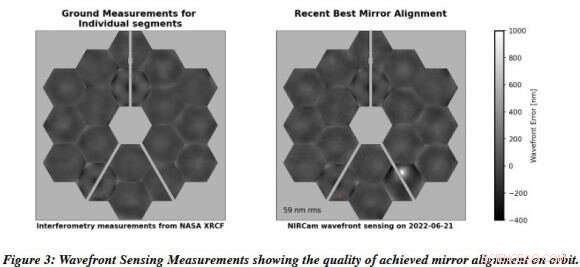
Sammenligning af Webbs spejljusteringer, hentet fra rapporten "Karakterisering af JWST science performance from commissioning" (12. juli 2022). Kredit:NASA/ESA/CSA
Verden tumler stadig efter udgivelsen af James Webb Space Telescope's (JWST) første billeder. Disse gav et omfattende overblik over den slags videnskabelige operationer, som Webb vil udføre i løbet af sin 20-årige mission. De inkluderede det mest følsomme og detaljerede kig på nogle ikoniske astronomiske objekter, spektre fra en exoplanetatmosfære og et dybt feltbillede af nogle af de fjerneste galakser i universet. Siden deres udgivelse er vi også blevet behandlet med glimt af objekter i solsystemet fanget af Webbs infrarøde instrumenter.
I mellemtiden udgav JWST-samarbejdet en komplet rapport med titlen "Karakterisering af JWST science performance from commissioning", hvor de undersøgte alt, hvad Webb har opnået indtil videre, og hvad de forventer gennem hele missionen. Dette papir udkom for nylig online og dækker alt fra teleskopets navigation og peger til ydeevnen af dets mange instrumenter. En interessant godbid, som ikke tidligere er blevet frigivet, er, hvordan Webb blev udsat for en række mikrometeoroidpåvirkninger, hvoraf den ene forårsagede "ukorrigerbar ændring" i et spejlsegment.
Holdet bag denne undersøgelse omfattede forskere fra de tre deltagende rumorganisationer - NASA, European Space Agency (ESA) og Canadian Space Agency (CSA) - og fra missionens mange partneragenturer. Disse omfatter Space Telescope Science Institute (STScI), Niels Bohr Institutet, Max-Planck-Institut für Astronomie (MPIA), UK Astronomy Technology Center (UK ATC), National Research Council Canada (NRCC), Instituto Nacional de Técnica Aeroespacial (INTA), Centro de Astrobiología (CAB) og mange luftfartsselskaber, universiteter, forskningsinstitutter og agenturer verden over.
Det papir, de kompilerede, vurderer JWST-ydelsen i løbet af den seks-måneders idriftsættelsesperiode, før den blev sat i drift den 12. juli 2022. Dette bestod i at karakterisere observatoriets ydeevne i kredsløb, JWST's design og arkitektur og den forudsagte præ-lancering. Disse blev derefter sammenlignet med ydeevnen af rumfartøjet, teleskoper, videnskabelige instrumenter og jordsystemet. Afsnit 4 i rapporten, Optisk ydeevne, omhandler, hvordan Webbs forskellige instrumenter fungerede under idriftsættelsesperioden.
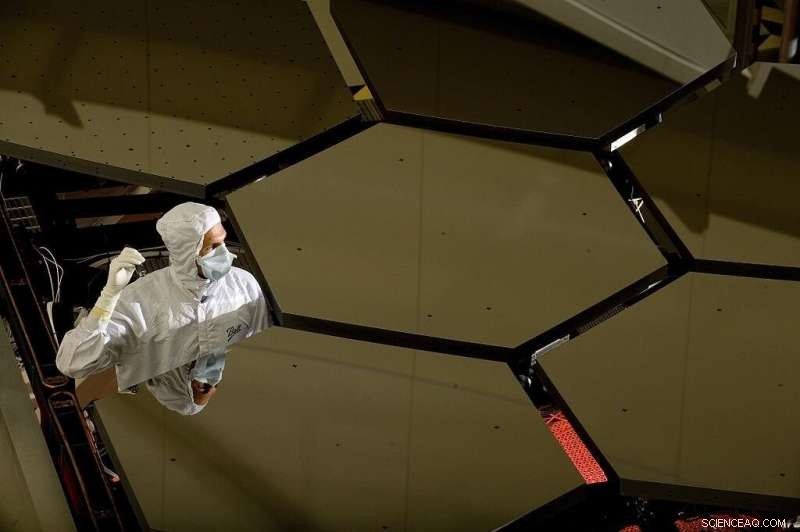
Et primært spejlsegment af James Webb-rumteleskopet, lavet af beryllium. Kredit:NASA/MSFC/David Higginbotham/Emmett Given
JWST's primære spejl består af atten sekskantede segmenter arrangeret i en honeycomb-konfiguration. Hvert segment er sammensat af forgyldt beryllium, og alle er justeret for at sikre den højest mulige opløsning og følsomhed. Den samlede ydeevne måles i form af Wavefront Error (WFE), som refererer til, hvordan lys opsamlet af teleskopets spejle afviger fra lysets forventede bølgelængde. Den overordnede udstrækning bestemmes ved at beregne det opsamlede lyss afvigelse fra Root-Mean-Square (RMS) fejlen – det sfæriske gennemsnit af hele bølgefronten.
Dette udtrykkes matematisk ved hjælp af enhederne for den bestemte bølgelængde, målt i nanometer (nm), når man har at gøre med infrarøde bølgelængder. Afsnit 4.7 omhandler mikrometeoroidpåvirkninger og deres potentielle effekt på Webbs langsigtede optiske ydeevne. Vurderingen begynder med at minde læserne om, at ethvert rumfartøj uundgåeligt vil støde på mikrometeoroider, og oplister derefter, hvordan adskillige påvirkninger var forventet i løbet af idriftsættelsesperioden:
"Under idriftsættelse registrerede bølgefrontsføling seks lokaliserede overfladedeformationer på det primære spejl, som tilskrives nedslag fra mikrometeoroider. Disse skete med en hastighed (omtrent én pr. måned) i overensstemmelse med forventningerne før lancering. Hver mikrometeoroid forårsagede nedbrydning i bølgefronten af impacted mirror segment, as measured during regular wavefront sensing. Some of the resulting wavefront degradation is correctable through regular wavefront control; some of it comprises high spatial frequency terms that cannot be corrected."
They further indicate that these micrometeoroid impacts were detected so far through wavefront sensing. Five of the six detected impacts had negligible effects, contributing to a combined total of less than 1 nanometer to the overall wavefront error. However, the remaining impact, which occurred between May 22nd and May 24th, caused a "significant uncorrectable change" in the overall figure of segment C3. This segment is located on the lower right side of Webb's primary mirror (when seen from the front), and the effect is illustrated in the Report (see image above).
Luckily, the overall effect was small since only a small portion of the telescope area was affected by it. The mission teams also conducted two realignment steps to correct for the impact, which brought the telescope alignment to a minimum of 59 nm RMS, which is about 5 to 10 nm above the previous best wavefront error RMS values. The authors of the Report also go on to note that "drifts and stability levels" in the telescope typically result in a "telescope contribution" of between 60 (minimum) to 80 nm RMS—at which point, wavefront control is typically performed.
They also explain that it is unknown at this time whether or not the May 2022 impact to segment C3 was rare or something that can be expected to happen frequently throughout JWST's mission. As they state, this is essential if the JWST mission teams hope to determine if the telescope will be more susceptible to damage by micrometeoroids than pre-launch modeling predicted:
"The project team is conducting additional investigations into the micrometeoroid population, how impacts affect beryllium mirrors, and the efficacy and efficiency tradeoffs of potential mitigations such as pointing restrictions that would minimize time spent looking in the direction of orbital motion, which statistically has higher micrometeoroid rates and energies."
To summarize, the impact on the C3 segment raised concerns among the mission controllers. But the upside is that it was nothing they couldn't address and is not expected to affect Webb's long-term science operations. As the Report summarizes:
"The key outcome of six months of commissioning is this:JWST is fully capable of achieving the discoveries for which it was built. JWST was envisioned 'to enable fundamental breakthroughs in our understanding of the formation and evolution of galaxies, stars, and planetary systems'… we now know with certainty that it will. The telescope and instrument suite have demonstrated the sensitivity, stability, image quality, and spectral range that are necessary to transform our understanding of the cosmos through observations spanning from near-earth asteroids to the most distant galaxies."
Moreover, the Report's authors conclude that the JWST's performance has been better than expected, almost across the entire board. In terms of the optical alignment of its mirrors, the point spread function, the time-stability of its imaging, and the fine guidance system that points the observatory, Webb has exceeded expectations. They also indicate that the mirrors are cleaner, and the science instruments have generally provided higher total system throughput than pre-launch expectations. All of this adds up to some optimistic appraisals:
"Collectively, these factors translate into substantially better sensitivity for most instrument modes than was assumed in the exposure time calculator for Cycle 1 observation planning, in many cases by tens of percent. In most cases, JWST will go deeper faster than expected. In addition, JWST has enough propellant on board to last at least 20 years."
The JWST Collaboration stated that further details will be presented in a planned series of papers. These will appear in a special issue of the Publications of the Astronomical Society of the Pacific (PASP) dedicated to the JWST. + Udforsk yderligere
James Webb telescope hit by micrometeoroid:NASA
Sidste artikelSolstorm rammer Jordens magnetfelt den 21. juli
Næste artikelJagt efter mørke galakser med FAST-projekt
 Varme artikler
Varme artikler
-
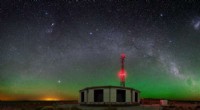 Ny funktion fundet i energispektret af universets mest kraftfulde partiklerUniversity of Delaware forskere er en del af et samarbejde om at studere kosmiske stråler. Ud over Cherenkov detektortanke fyldt med vand, Pierre Auger-observatoriet i Argentina har en anden slags kos
Ny funktion fundet i energispektret af universets mest kraftfulde partiklerUniversity of Delaware forskere er en del af et samarbejde om at studere kosmiske stråler. Ud over Cherenkov detektortanke fyldt med vand, Pierre Auger-observatoriet i Argentina har en anden slags kos -
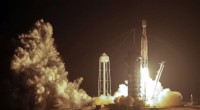 SpaceX opsender heftig raket med 24 satellitter, eksperimenterEn SpaceX Falcon tung raket løfter sig fra pad 39A ved Kennedy Space Center i Cape Canaveral, Fla., tidlig tirsdag, 25. juni, 2019. Falcon-raketten har en nyttelast af militære og videnskabelige forsk
SpaceX opsender heftig raket med 24 satellitter, eksperimenterEn SpaceX Falcon tung raket løfter sig fra pad 39A ved Kennedy Space Center i Cape Canaveral, Fla., tidlig tirsdag, 25. juni, 2019. Falcon-raketten har en nyttelast af militære og videnskabelige forsk -
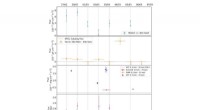 Meget højenergi gammastråleemission detekteret fra blazar TXS 1515-273Multi-bølgelængde lyskurve af TXS 1515–273. Kredit:MAGIC Collaboration, 2021. Et internationalt hold af astronomer har udført multibølgelængdeobservationer af en blazar kendt som TXS 1515-273; de
Meget højenergi gammastråleemission detekteret fra blazar TXS 1515-273Multi-bølgelængde lyskurve af TXS 1515–273. Kredit:MAGIC Collaboration, 2021. Et internationalt hold af astronomer har udført multibølgelængdeobservationer af en blazar kendt som TXS 1515-273; de -
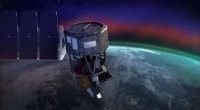 NRL opsender rumvejrinstrument på NASA-satellitUS Naval Research Laboratorys Michelson Interferometer for Global High-Resolution Thermospheric Imaging (MIGHTI) nyttelast lanceret på NASAs Ionospheric Connection Explorer (ICON) mission for at stude
NRL opsender rumvejrinstrument på NASA-satellitUS Naval Research Laboratorys Michelson Interferometer for Global High-Resolution Thermospheric Imaging (MIGHTI) nyttelast lanceret på NASAs Ionospheric Connection Explorer (ICON) mission for at stude
- Den amerikanske rumlegende John Glenn er indlagt på hospitalet i Ohio
- Sammenligning af vandisomerers kemi
- Forskere finder forskellige evolutionære veje for to undertyper af kontaktbinære filer
- Storbritannien søger at begrænse rip-off energipriser
- Giftige kemikalier for evigt ophobes over vandspejlet
- Nyt kamerasystem til at tilbyde billeder i høj opløsning og video af månelandinger


